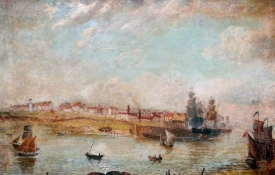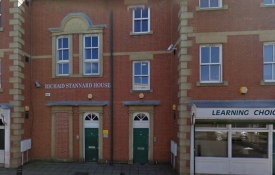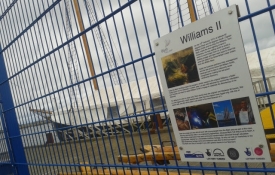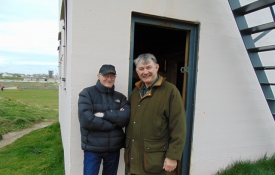Welcome to the Community View section of the website. This area is dedicated to articles of interest, community information and local topics that are submitted by members of the public or guest writers. It is also the main section dedicated to the Youth Media Group Project.
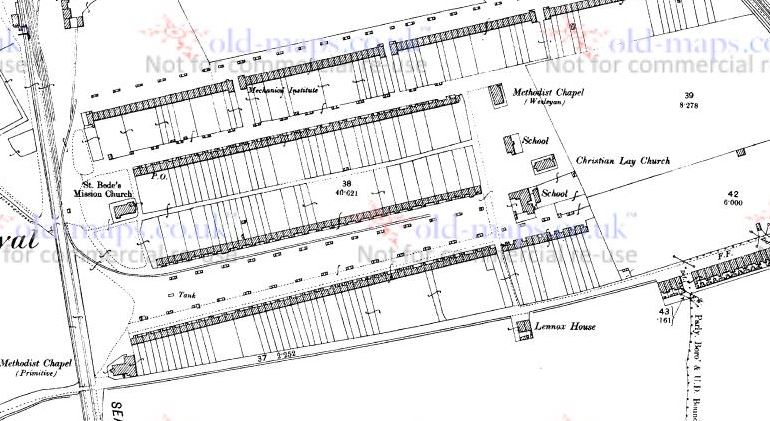
John Wesley had a great influence on his tours of the Northern Coalfield during the 18th century. The mining district adopted the Methodist Lay Church with great vigour. The Church of England was often seen as "the Tory party at prayer". Coal mine owners often welcomed the Methodist churches into their colliery villages as this religious influence had a positive effect on what could be quite a "rough and ready" society of mineworkers.
Location Map
However, it was not a Methodist church (as Methodism had split into separate branches by this stage) that the Morpeth Herald were reporting on the laying of a foundation stone in 1886 at New Delaval Colliery Village to the west of Blyth but a Christian Lay Church. The Church by the time of the 3rd edition Ordnance Survey in 1922 was another branch of the Methodist movement and was pulled down in recent years to make way for educational buildings. But according to the newspaper article a time capsule was buried in the church. Was it ever found during demolition? What happened to it? This is the article:
"On Saturday afternoon an interesting ceremony took place in the laying of a foundation stone of a new Christian Lay Church at New Delaval. The Christian Lay Denomination first took up habitation at this colliery about three years ago and has hitherto worshipped in the in the colliery schoolroom which was kindly lent by the Seaton Delaval Coal Company. The body grew rapidly in earnestness and numbers until the building now became an imperative necessity. An excellent central site was secured in the heart of the village, in close proximity to the Weslyan Chapel and to several school buildings, and the work of erection briskly commenced. Fine weather favoured the ceremony on Saturday, and there was a large attendance. After the opening of the proceedings Mr James Haswell of Newcastle [Christian Lay Church Minister] gave an address bearing on Lay Church affairs. He said that though the church was of comparatively recent establishment it had already unquestionably justified its claim to live and had given unmistakable evidence of its vitality. Progress had marked its brief career and that day they had a practical demonstration of advancement and a promise of future usefulness. The church had had its disappointments, which the members had met manfully and nobly. He then referred to the kind treatment the church had received from the owners of Seaton Delaval Colliery. He congratulated the members upon the site they had obtained; it was all that could be desired. He reminded them that though as a denomination they were comparatively young as a church they were the most ancient of all dating from Apostolistic times. They were also the most democratic of the churches. Mr Haswell concluded by presenting, on behalf of the members of the church, a silver trowel to Mr R E Ornsby of Seaton Delaval [The manager of Seaton Delaval/New Delaval Collieries] in commemoration of that gentleman’s connection with the laying of the stone. Mr Ornsby having returned thanks, said that though he did not belong to the church, yet from the bottom of his heart he was glad to offer a helping hand to every denomination. He then proceeded to lay the stone. In the cavity beneath there was placed a bottle containing a newspaper for that day, copies of the circuit rules, preacher’s plan, names of trustees and teachers and a bill of the day’s proceedings - Mr Ornsby expressed the hope that the church would prosper, not only in his lifetime, but for ages to come - A public tea was afterwards held in the colliery schoolroom, and a meeting was held at night. On Sunday the anniversary services of the Sabbath School were successfully held."
| 1922 OS New Delaval |
As can be seen on the 2nd edition Ordnance Survey map of 1897 the Church of England had established a small mission chapel near to the Christian Lay Church. This also had the assistance of the colliery owners who donated the land and the necessary building materials. Previously the parishioners had to walk across the field to Horton Church, some distance away. It was opened in 1892 but by 1920 had proved to be too small and the present St Bede's Church was opened on Newcastle Road in 1930 and was the centre of a parish in its own right.
